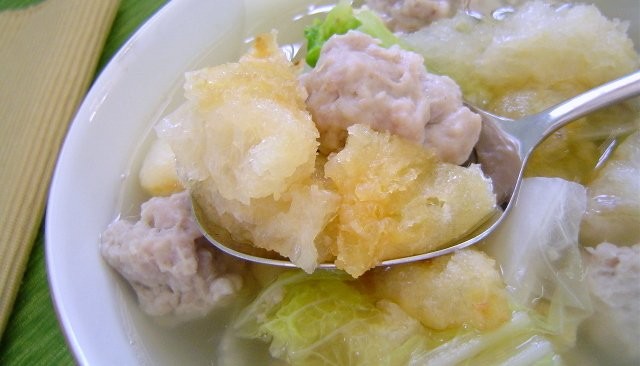
Fish Maw in Chinese Cooking
Plays the role of a texture ingredient like the sea cucumber in Chinese food, fish maw is actually the air bladder of large fish, the function of which is to regulate water and oxygen flow so that the fish can ascend or descend in the water. The price of fish maw is far from cheap and it's one of the luxury ingredients in Chinese cuisine.
Like a lot of ingredients in Chinese culinary traditions, the fish maw is also regarded as a nourishing tonic that helps blood circulation and beneficial to the general health.
Fish maws are sold dried in two forms – deep fried or non-deep dried. Deep fried fish maws are puffy, light and look like a yellow sponge or pork rind. Whereas the other type is in stiff, cream-colored sheets. Most recipes that require fish maw will tell you how to prepare it and they may vary. Some requires you to simmer it while others simply soak it using cold water. Basically, all fish maw should be deep-fried before anything else. If you bought the non-deep fried one, deep fry it in moderately hot oil until it puffs up and become white. Then soak it until pliable, rinse and scrub clean. Squeeze out the excess water after the soak to remove the oil.
Repeat the soaking and squeezing process until you are comfortable with the level of its greasiness. Lastly, cut them into slices of desired size and they are good to go. If the fish maw smells fishy, you may want to deep fry it again so that it becomes fluffy and free from odor again. Alternatively, boil for 5 to 10 minutes with a stalk of scallion (spring onion) and a slice of ginger.
Like the sea cucumber, it takes on the flavor of surrounding ingredients it is cooked with like a sponge. Fish maw is mostly used in soups and the delicious fish maw soup is often served in the Chinese households during their New Year.
Fish maw recipes you must try!
